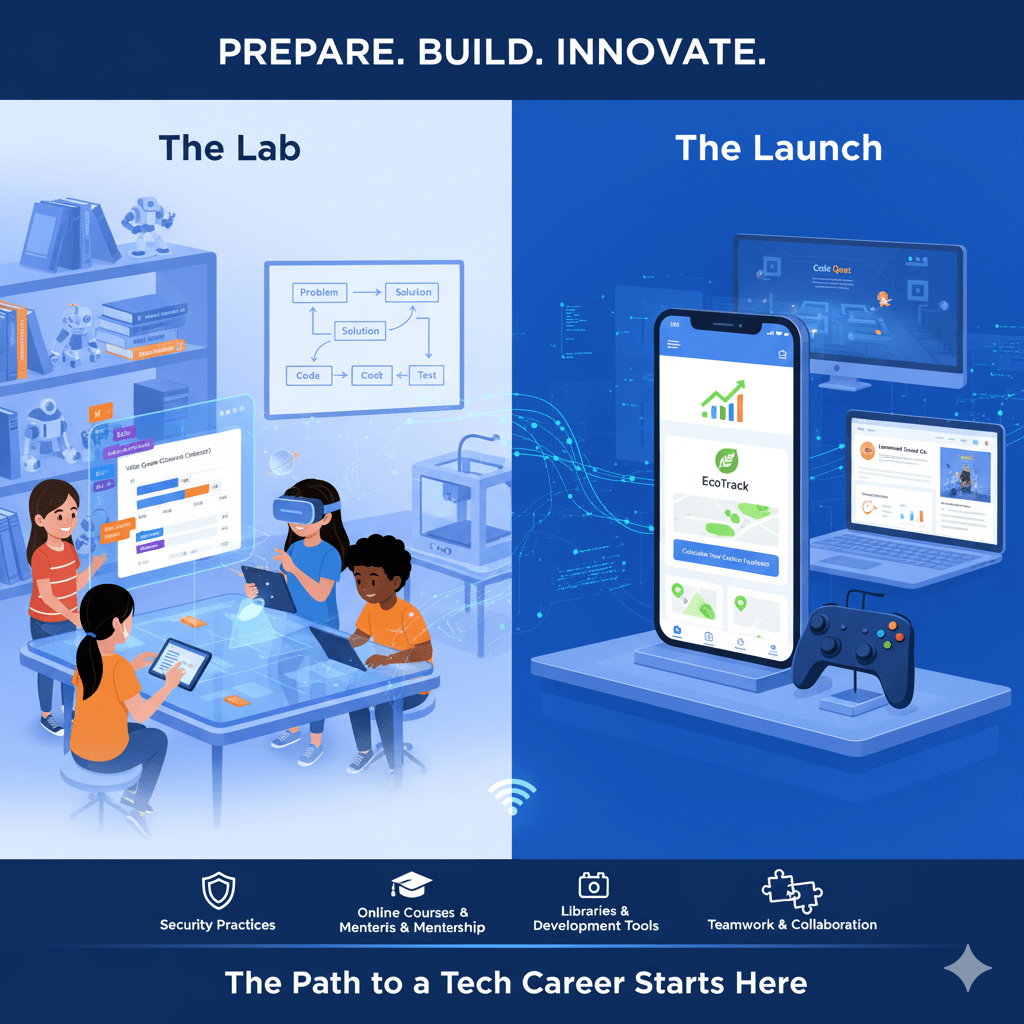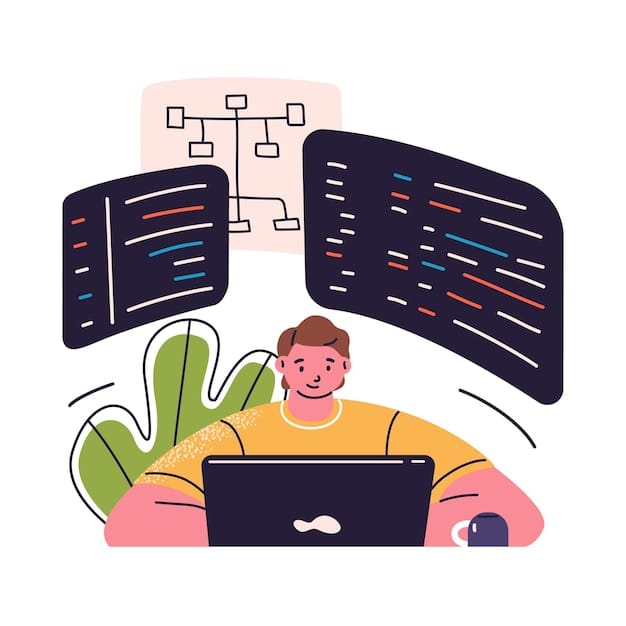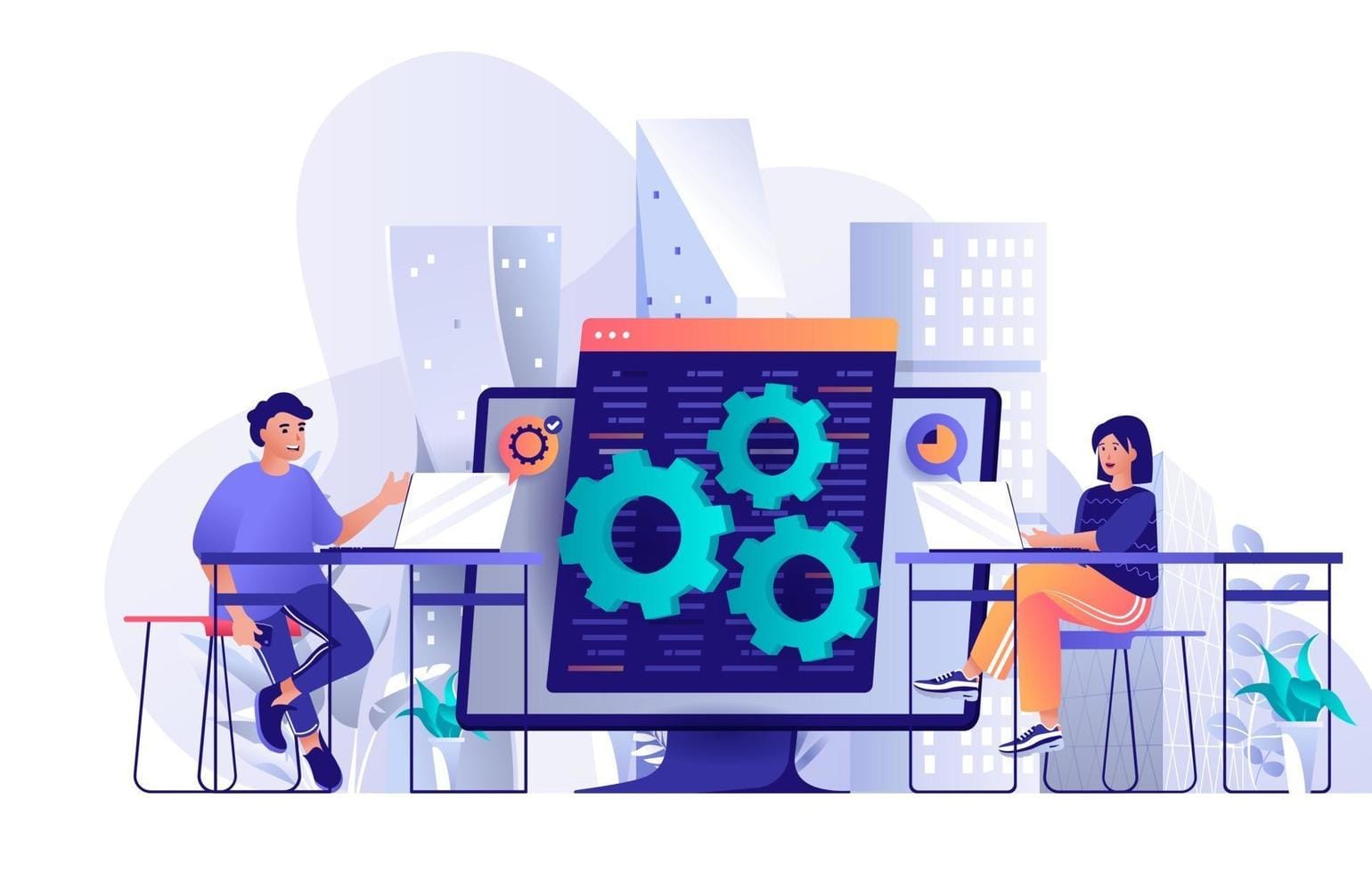Preparing Kids for Tomorrow’s Tech Careers With Advanced Coding Skills
To prepare kids for future tech careers, we need to teach them advanced coding skills. Basic programming isn't enough anymore. Students today need to learn data analysis and understand data structures. They should also work on real projects that solve everyday problems in business, education, and life. Diving into Generative AI, Virtual Reality and online courses helps kids in building skills. They learn to implement ideas, work in teams and create solutions that companies value.
Kids can code by using tools, libraries, and simple databases. They can build apps, create websites or design video games. These projects can generate leads, connect with customers and drive growth. The best ways to prepare the next generation are to let them explore technology, try different learning methods and provide the right resources and mentorship. This support helps them plan for a successful career in a digital world.

Why Preparing Kids for Future Tech Careers Matters
The world is shifting fast. Future tech careers will demand digital fluency, not just basic computer use. Industries from health to retail now rely on automation, data analysis and software. That means kids who learn advanced coding skills early get a real head start.
Coding skills boost logical thinking, help kids break big problems into small steps, and build confidence to try new ideas. Employers and industry leaders want people who can design, test and scale solutions. These skills start with a strong coding foundation.
When kids learn programming languages and data structures, they see how apps, websites and games function. That insight turns curiosity into career paths. You can build websites, explore virtual reality projects, analyze data for real-world impact or join startup teams later.
Parents guiding this journey help kids discover future opportunities. They encourage exploration of passions and prepare them for jobs that don’t exist yet. In short, preparing kids now helps them thrive in a future where technology shapes nearly every business and life decision.

The Role of Advanced Coding Skills in Shaping Tomorrow’s Innovators
Advanced coding skills go beyond dragging blocks on a screen. They include writing readable code, using libraries, structuring data and solving algorithmic problems. These skills train kids to think systematically. They learn to plan, test and iterate, the same methods industry leaders use to ship products and services. Coding teaches pattern recognition and troubleshooting, which apply to Robotics, Data Analysis, databases, and even arts and design.
Learning advanced topics like data structures and basic algorithms prepares students for intermediate-level challenges. They can optimize code, handle larger datasets, and connect software to external systems. Exposure to generative AI concepts or visualization tools gives students the ability to experiment with the latest tech trends safely.
That experimental mindset matters: it helps students move from “how it works” to “how to improve it” and that shift is what creates entrepreneurs, product builders and successful team members in business settings.

Building a Strong Foundation: Age-Appropriate Programming Languages
Choosing the right programming language at the right age is important. For younger kids, block-based tools like Scratch help them learn logic without typing errors. For older kids, Python is a great next step. It’s simple, widely used and leads to data analysis, web development, and scripting. Java and C++ are better for students who want to explore software engineering and performance challenges.
Introduce libraries gradually. A beginner uses simple graphics libraries to make games. Later, students explore data libraries for analysis or machine learning experiments. For virtual reality projects, tools like Unity with C# let students build immersive experiences. The goal is to match the language and tools with the child’s interest and the type of projects they find exciting. Kids who build things they care about practice more, learn faster and see tech careers as real options.

How Live Online Classes Enhance Advanced Coding Skills Development
Live online classes combine structure and flexibility. Students can join expert-led classes from anywhere. They can access to courses and get instant feedback. Interactivity keeps students on track: instructors can debug code live, review projects and suggest improvements. Online platforms offer video lessons, coding sandboxes and community forums. This lets students practice outside class, connect with peers and explore ideas.
For parents, the best online programs show clear learning pathways from beginner to intermediate level. They provide real projects, access to tools, recorded sessions for review and assessments that measure progress.
Courses that team up with industry experts or feature guest speakers show students real-world expectations. This also sparks their career ambitions. Live classes help students learn teamwork skills. They practice pair programming, code reviews and collaborative projects. These activities reflect real workplace scenarios.

Choosing the Right Programming Path for Your Child’s Tech Future
Not every child follows the same path. Some will enjoy making websites and interfaces. Others will explore generative AI or robotics. To choose the right path, consider your child’s interests and strengths.
Do they prefer design and visuals? Encourage web development and UX basics. Do they prefer math and logic? Data analysis or back end systems with databases and data structures could suit them.
A structured learning plan should include: fundamentals, programming language (Python/Java/C++), project work and exposure to modern tools like cloud platforms, libraries and basic security practices. Let students compare different paths by trying short projects in several areas. This flexibility helps them discover passion and narrows down which courses and resources to follow next.

Hands-on Learning: Get Kids to Get Their Hands Dirty
Kids learn by doing. Encourage them to “get their hands dirty” with small wins like build a calculator, a personal website, etc. Hands-on work means working with real code, real errors and real fixes. These small wins build confidence and resilience, skills that matter a lot in tech careers.
When students work on real projects, they practice planning, testing and fixing problems. Encourage version control basics, like saving code snapshots, so they learn to track changes,a habit used by professional developers. Debugging real errors helps them practice reading error messages and finding solutions on their own, which builds independence and strong problem-solving skills.

Project-Based Learning with Real Projects
Project-based learning turns theory into action. A student who designs a simple weather app learns HTTP requests, APIs and data parsing. A child creating a small robotics project learns mechanics, sensors and code integration. These kinds of projects show students how coding links to design, business, and solving real problems.
Example: A student builds a website for a local hobby group. They plan the layout, put it online using an easy hosting tool, and promote it so people can join. That one project teaches them coding basics, simple SEO, and even how to attract members to a community. These skills prepare them for real company projects or even freelance work in the future.
Learning by building makes technology tangible and future careers possible

Industry Leaders Inspiring the Next Generation of Innovators
Industry experts play a big part in helping students grow. Companies like Google, Microsoft, and other tech leaders set the standard for tools, safety, and best practices. When students learn coding with programs connected to these partnerships, they see how real experts design, build, and grow projects.
These collaborations also let students tackle real-world challenges and see how problems are solved in actual businesses. Experts share their knowledge, guide development, and even open doors to contests or internships. Through these experiences, kids learn the value of planning and teamwork. For students who dream of a career in technology, this kind of exposure is both meaningful and inspiring.

Real Projects That Help Kids Get Their Hands Dirty
The best way for kids to really learn coding is by doing it themselves. Reading guides or tutorials helps, but it’s not enough. They need to build real projects, break things, and then fix them. It could be making a small app, linking a database, or testing out security tricks. When kids get hands-on, the lessons stay with them.
This way of learning also shows them how teamwork works, since real projects often need people working together. They learn resilience too, by finding bugs, fixing errors, and making their code better. Getting their hands dirty teaches kids the same process professionals follow: plan, test, build, and improve. With each project, they become more confident, get used to real tools, and gain the practical skills they’ll need for future tech jobs.

Tips for Parents to Support Their Kids’ Journey in Mastering Advanced Coding Skills
Parents play an indispensable role in this learning process. Your support can be the difference between a fleeting hobby and a lifelong passion. Here are some of the best ways to provide effective support:
Encourage consistent practice: Practicing is the best way of learning. Invole the kids in frequent small coding projects and let their hands get dirty. Frequent practice reinforces their knowledge and skills.
Celebrate every success: Learning advanced coding has many small victories along the way. Celebrate debugging a tricky error or completing a project module. This positive reinforcement builds confidence and promotes a growth mindset.
Provide tools and resources: Make sure they have the right technology, a stable internet connection, and a quiet place to work. Explore additional online resources, tutorials, and coding libraries together.
Inculcate problem-solving skills: When they face challenges, avoid giving them the answer directly. Help them find solutions by breaking down the problem and trying different ways. This teaches them to solve problems on their own.
Work with mentors: Maintain contact with their mentors and teachers. Their advisory experience offers useful insights into your child's development. This helps you find ways to support their learning at home.
By staying involved and engaged, you help your child remain motivated and confident as they develop the advanced coding skills that will define their future.
Conclusion
Preparing kids for future tech careers means equipping them with more than just textbook knowledge. It requires cultivating digital future skills, creativity and the adaptability to thrive in an ever-changing world. Advanced coding skills open doors to innovation, providing children with the key ability to build, create, and solve the challenges of tomorrow. By supporting their journey today, you are not just helping them learn a language; you are giving them the tools to write the code for their own successful life.

Frequently Asked Questions
How do coding skills benefit children beyond just IT careers?
Coding helps kids learn how to solve problems, think step by step and use their creativity. These skills are important for future careers in technology and many other fields. From business and data analysis to design, coding teaches students how to explore ideas, work together in teams, and build solutions that people and companies need. Even jobs outside technology now depend on digital skills, which makes coding an important skill for life.
What makes advanced coding skills different from beginner coding?
Beginner coding teaches basic commands and logic, while advanced coding skills go deeper into data structures, libraries, and building real projects. At this level, students learn to implement databases, create apps, and explore generative AI or virtual reality. These abilities prepare them for intermediate and advanced courses that connect directly to exciting future careers.
How can kids stay motivated while learning complex coding topics?
The best way to keep kids engaged is by letting them get their hands dirty with projects that match their passions. Building games, creating a website or designing a simple app makes learning fun. Support from mentors, teamwork opportunities and online courses with interactive video lessons also help students stay confident as they advance to the next level.
Are there specific coding languages that better prepare kids for emerging tech fields?
Yes. Python is widely used in AI, data analysis and Machine Learning. Java is strong for enterprise services and large-scale business projects. C++ supports robotics, engineering and security-focused systems. Learning these languages at the intermediate level helps kids explore advanced technology trends like generative AI, virtualization and future tech careers.
How do online coding classes adapt to each child’s learning pace and style?
Online coding courses offer flexible options. They include interactive lessons, real projects, and personal mentorship. Students can join live sessions. They can access resources anytime. Plus, they get feedback that matches their skill level. These methods help every learner, from beginners to intermediates, progress at their own pace. They also build practical skills needed in today’s tech world.


